As the United States Environmental Protection Agency (EPA) seeks to deliver on the commitments remaining in the 2021-2024 PFAS Strategic Roadmap, we’re expecting to see many new proposals and tying up of loose ends. At the same time, states and other entities are also focusing on PFAS, so we expect plenty of PFAS action at that level as well. As always, in our PFAS News and Views posts, we highlight and provide our perspectives on those news stories most important to our customers.
EPA Releases Final Version of Method 1633 and Method 1621
In late in January, the EPA finalized Method 1633 and Method 1621. These methods are a critical step forward in method standardization for the analysis of PFAS in non-potable liquids and solid matrices. Notably, Method 1633 now includes protocols for testing all planned matrices, including wastewater, surface water, ground water, soils, biosolids, biological tissues, landfill leachate, and sediment.
Our PFAS team is working through the details and plans to publish a technical note soon. We will announce the availability of that document in our blog, so if you haven’t already, please subscribe to ensure you get the announcement in your inbox.
EPA Proposes Two New RCRA Rules for PFAS
On February 1, the EPA announced two new rules to address PFAS environmental contamination. The first proposal would designate 9 PFAS as hazardous compounds under the Resource Recovery and Conservation Act (RCRA). The PFAS to be listed include PFOA, PFOS, PFBS, HFPO-DA, PFNA, PFHxS, PFDA, PFHxA, and PFBA. The second proposal seeks to amend the definition of hazardous waste under RCRA to give the EPA the authority to require corrective action, not only of substances identified as hazardous waste in the regulations but also of any substance that meets the statutory definition of hazardous waste.
EPA Releases List of Known PFAS Chemicals for TSCA Reporting
On January 26, the EPA published a list of known PFAS chemicals that trigger reporting requirements under the EPA’s recently promulgated Toxic Substances Control Act (TSCA) PFAS reporting rule. This list helps clarify the requirements as the TSCA reporting rule only describes the structure of the PFAS that would trigger reporting and not the chemical names or CAS numbers. However, some experts are advising caution as the known chemicals list only includes 1,224 PFAS, while the EPA initially estimated the new reporting rule would cover 1,462 compounds. In other words, this TSCA PFAS list should probably not be considered final.
Statutory Deadline for PFAS MCLs in Drinking Water
In its Second Annual Progress Report (issued December 2023), the EPA said it plans to finalize its National Primary Drinking Water Regulations (NPDWR), setting limits on certain PFAS in drinking water in early 2024. As the Association of State Drinking Water Administrators (ASDWA) pointed out recently, the final rule was sent for review to the Office of Management and Budget (OMB) on December 15, 2023, and the EPA’s statutory deadline for finalizing the rule is September 2024.
TRI Reporting Requirements Now Stand at 196 PFAS
On January 9, the EPA announced the addition of seven PFAS to its Toxic Inventory Control (TRI) reporting requirements, bringing the total number of PFAS covered by TRI to 196. Six of the PFAS were automatically added due to the finalization of their toxicity values. These six include:
-
Ammonium perfluorohexanoate; Chemical Abstract Service Registration Number (CASRN) 21615-47-4
-
Lithium bis[(trifluoromethyl)sulfonyl] azanide; CASRN 90076-65-6
-
Perfluorohexanoic acid (PFHxA); CASRN 307-24-4
-
Perfluoropropanoic acid (PFPrA); CASRN 422-64-0
-
Sodium perfluorohexanoate; CASRN 2923-26-4
-
1,1,1-Trifluoro-N-[(trifluoromethyl)sulfonyl] methanesulfonamide; CASRN 82113-65-3
A seventh (betaines, dimethyl(.gamma.-.omega.-perfluoro-.gamma.-hydro-C8-18-alkyl); CASRN 2816091-53-7) was added automatically due to declassification under TSCA.
 SNUR Approval Required for Re-activated PFAS
SNUR Approval Required for Re-activated PFAS
On January 11, the EPA published a final Significant New Use Rule (SNUR) requiring companies to receive approval from the agency before manufacturing, importing, or processing PFAS designated as “inactive” in the TSCA inventory. This new rule takes effect on March 11, 2024, although some exemptions may be applied.
State Deadlines for Currently Unavoidable Use (CUU) Proposals
Maine’s PFAS in Consumer Products law allows some exemptions for manufacturers if the Maine Department of Environmental Protection (DEP) determines the PFAS “to be essential for health, safety or the functioning of society” or if there are no reasonably available alternatives. Proposals are due to the DEP by March 1, 2024. More information can be found on the DEP’s website.
Minnesota’s law also allows exemptions to the upcoming bans on the sale of products containing PFAS if the manufacturer can prove that the PFAS is “essential for health, safety, or the functioning of society and for which alternatives are not reasonably available.” However, in this case, the request for comments serves as legal notice of the Minnesota Pollution Control Agency’s (MPCA) intent to begin rulemaking. In addition, the agency is requesting input on the rulemaking itself, not on which specific uses of PFAS are currently unavoidable. Comments are due by 4:30 PM CT on March 1st.
Oeko-Tex Changes PFAS Limits in Product Certifications
PFOA and PFOS-free labeling is becoming more common. Oeko-Tex was one of the first to provide a PFAS-free certification for textiles. In January 2024, the association updated three certifications (Standard 100, Leather Standard, and Eco Passport) to include a total fluorine limit of 100 mg/kg. This new limit replaced the previous limit, which measured PFAS in terms of extractable organic fluorine (EOF). Oeko-Tex says it made the change to more closely align with state regulatory limits or bans on PFAS in textiles and apparel.
New Hampshire Proposes Ban on PFAS in Consumer Products
On January 9, 2024, HB 1649 was introduced into the New Hampshire state legislature. This bill seeks to ban intentionally added PFAS in a variety of consumer products, including carpets and rugs, cosmetics, fabric treatments, feminine hygiene products, fluorine-treated containers, food packaging and containers, juvenile products, personal protective equipment, dental floss, and upholstered furniture. In the bill, PFAS are defined as “a class of fluorinated organic chemicals containing at least one fully fluorinated carbon or methylene carbon atom.” If passed, the ban would take effect July 1, 2028.
Webinar: Quantifying PFAS in Consumer Products
Bans and limits on PFAS in consumer products are being considered around the world. On February 14, experts from the ASTM subcommittee on PFAS discussed what you need to know about project planning, analytical technologies, and available methods to quantify PFAS in consumer and related products. If you missed the session, you can still watch it on-demand by registering here.
We’re here for you in 2024!
As I noted at the beginning of this post, we expect 2024 to be filled with PFAS news as the EPA reaches the end of its PFAS Strategic Roadmap and states add PFAS to their legislation agendas. We’ll be here for you as the stories unfold, sharing our insights on what the details mean for our customers and how Pace® can help you address whatever challenges lie ahead. Remember to subscribe for updates, and if there’s any way we can help, don’t hesitate to reach out to us.



